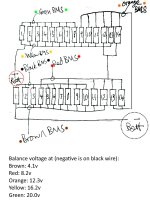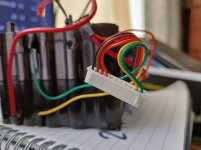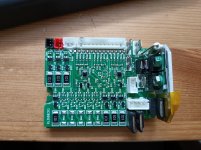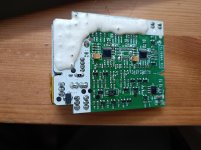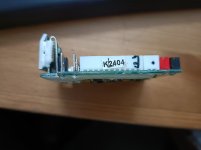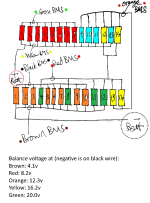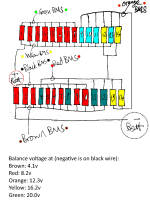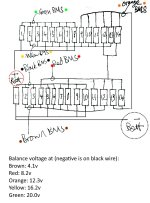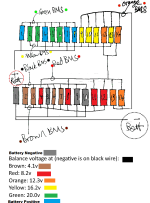UnclePuncher
1 mW
- Joined
- Jan 23, 2023
- Messages
- 17
Hi all,
I have an Urban Mover (24v). I bought it from a neighbour without a charger. Battery still has charge and works (I've been using it with my electric chainsaw). But I need to sort out the charger.
I bought a new 24/28v ebike charger on ebay but could only find one with a 3 pin plug (mine has a 5 pin plug). So I've ordered a new 5 pin plug to fit onto the charger. Happy to solder the new one on.
Edit: my original list wasn't terribly clear. I know the polarity of the battery output. I don't know the polarity of the charger input (to the battery). The 5 pin plug in the photo is for charging only. Battery output is in a separate port.
My issue is I don't know which pin on my battery (charger input) is positive and which is negative. On my battery (see photo below) only the two pins on the left hand side (not the lower central one) are connected to anything. Both go to the BMS but I can't tell which is positive. No markings on the BMS.
BMS is a kl3688cr3 which I believe is fairly widely used. But I can't seem to find a circuit diagram. I've no reason to believe its not working but can replace if needs be (I've done this before). Photo of the BMS is nabbed from somewhere else online but I've highlighted where the charger cables go to (red highlight - lower right hand corner). There are 4 pins but they're soldered together on the other side in 2 blocks of 2.
Thanks.
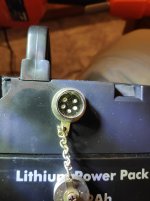

I have an Urban Mover (24v). I bought it from a neighbour without a charger. Battery still has charge and works (I've been using it with my electric chainsaw). But I need to sort out the charger.
I bought a new 24/28v ebike charger on ebay but could only find one with a 3 pin plug (mine has a 5 pin plug). So I've ordered a new 5 pin plug to fit onto the charger. Happy to solder the new one on.
Edit: my original list wasn't terribly clear. I know the polarity of the battery output. I don't know the polarity of the charger input (to the battery). The 5 pin plug in the photo is for charging only. Battery output is in a separate port.
My issue is I don't know which pin on my battery (charger input) is positive and which is negative. On my battery (see photo below) only the two pins on the left hand side (not the lower central one) are connected to anything. Both go to the BMS but I can't tell which is positive. No markings on the BMS.
BMS is a kl3688cr3 which I believe is fairly widely used. But I can't seem to find a circuit diagram. I've no reason to believe its not working but can replace if needs be (I've done this before). Photo of the BMS is nabbed from somewhere else online but I've highlighted where the charger cables go to (red highlight - lower right hand corner). There are 4 pins but they're soldered together on the other side in 2 blocks of 2.
Thanks.




